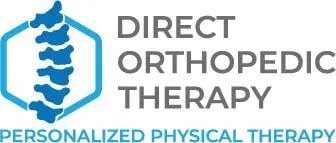You stretch. You foam roll. You’ve done every YouTube hip mobility drill you can find. And still, your hip feels stuck. Maybe it’s affecting your stride. Maybe it’s sending pain into your lower back. Or maybe you’re just tired of feeling tight every time you stand up.
Here’s the thing: sometimes, what your hip needs isn’t more stretching. It needs a deeper reset. That’s where dry needling for the hip flexor comes in.
At Direct Orthopedic, we use dry needling as a powerful tool to treat hip flexor dysfunction, especially when traditional methods aren’t cutting it. If you’re dealing with pain, stiffness, or mobility issues around your hips, this might be the missing link to finally get relief and move better.
What is the Hip Flexor?
Your hip flexors are a group of muscles that allow you to lift your knee and bend at the waist. The major player here is the iliopsoas—a combination of the psoas major and iliacus—which runs from your spine to your femur.
Other supporting hip flexor muscles include:
- Rectus femoris (part of the quad)
- Sartorius
- TFL (Tensor Fasciae Latae)
These muscles are involved in everything from walking and running to sitting and stabilizing your core.
But here’s the catch: because these muscles are located so deep and are constantly under load (think: sitting for hours, standing all day, or training hard), they can become tight, overactive, or riddled with trigger points that regular stretching just can’t access.
That’s where dry needling steps in—to target those deep areas that manual techniques simply can’t reach.
Common Causes of Hip Flexor Pain and Dysfunction
Tight or dysfunctional hip flexors can cause a ripple effect throughout your body. Some of the most common causes include:
1. Prolonged Sitting
Whether you work at a desk or spend hours commuting, chronic sitting shortens the hip flexors and reduces blood flow. Over time, they become stiff and weak—and your lower back picks up the slack.
2. Overtraining
Runners, cyclists, and lifters often overload the hip flexors without realizing it—especially if they don’t properly warm up or recover.
3. Poor Posture
Excessive anterior pelvic tilt (arching your lower back) puts your hip flexors on constant tension. This can lead to pain, weakness, or movement compensations.
4. Nerve-Related Conditions
The femoral nerve runs through the hip flexor area. Trigger points or tight muscle bands can compress it, leading to radiating pain or weakness.
5. Surgical or Injury History
Scar tissue from abdominal or hip surgery can cause deep restrictions, limiting hip extension and affecting gait. Hip flexor tightness is also common post-hip labral repair or lumbar spine surgery.
So, What Is Dry Needling?
Dry needling is a technique where a trained clinician inserts a thin, solid filament needle (no medication or injections) directly into trigger points—hyper-irritable knots or bands within a muscle.
Once the needle hits a trigger point, it can cause:
- A local twitch response (a brief, involuntary contraction)
- Improved blood flow to the area
- Reduced pain and muscle tension
- Restoration of normal length-tension relationship in the muscle
Unlike acupuncture, which is based on meridians and energy flow, dry needling is rooted in Western medicine and musculoskeletal anatomy. It’s all about releasing restrictions and restoring function.
Dry Needling the Hip Flexor: How It Works
The hip flexor, particularly the psoas, is a deep muscle that can’t be effectively treated with surface-level techniques. That’s where dry needling shines.
At Direct Orthopedic, here’s how we approach it:
1. Assessment First
We always start with a movement assessment. We look at your posture, gait, hip range of motion, and spine alignment to confirm whether your hip flexors are overactive, tight, or contributing to pain.
2. Targeted Needling
Once we identify the source, we carefully insert needles into the iliopsoas, TFL, and surrounding musculature, depending on your symptoms. This helps:
- Release deep muscular tension
- Reset overactive neuromuscular signals
- Improve hip extension and core stability
- Decrease compensatory strain on your back and pelvis
3. Follow-Up with Movement
Needling is just the beginning. We always pair it with corrective exercises, stretching, and neuromuscular retraining to reinforce the release and build long-term mobility.
What Does It Feel Like?
Most people describe dry needling as a deep pressure or cramping sensation, followed by a release. Some experience immediate relief, while others feel soreness (like a post-workout burn) for a day or two.
But here’s the key—when it’s done right, the results are noticeable fast.
You might feel:
- Increased range of motion
- Reduced pain or tightness
- Improved posture and alignment
- Easier walking, squatting, or lunging
Conditions We Treat with Hip Flexor Dry Needling at Direct Orthopedic
We use this approach for a variety of conditions, including:
- Anterior hip impingement
- Low back pain with tight hips
- Post-surgical stiffness
- Snapping hip syndrome
- Posture-related hip tightness
- Femoral nerve entrapment symptoms
- Hip flexor strains or chronic overload
Whether you’re an athlete, desk worker, or recovering from surgery, dry needling may be the fastest path to restoring hip mobility.
When to Consider Dry Needling
You should consider dry needling your hip flexor if:
- You feel tight despite regular stretching
- Your back pain isn’t responding to treatment
- You can’t extend your hip comfortably
- Your posture feels locked in a forward tilt
- You’ve tried other treatments but haven’t seen lasting results
Red Flags That Need Evaluation First:
If you’re dealing with:
- Radiating numbness or tingling
- Sharp pain into the groin or thigh
- Pain that worsens at night or at rest
You should get an evaluation first. Our team can screen for more serious issues like disc pathology, labral tears, or nerve involvement—and refer you for imaging or additional care if needed.
What Makes Direct Orthopedic Different?
At Direct Orthopedic, we don’t just needle and send you home. We combine dry needling with a full-body movement approach to make sure the results actually stick.
Our therapists specialize in:
- Sports performance and return-to-play
- Post-surgical hip and spine rehab
- Complex cases involving both muscle and nerve
- Teaching you how to stay pain-free—not just feel better for a day
We use real assessments, real treatment plans, and deliver real results.
Ready to Move Better? Book Your Dry Needling Session Today
If you’re tired of feeling stuck in your hips or your back pain just won’t quit, dry needling could be your next move. At Direct Orthopedic, we help active people unlock pain-free movement by treating the problem—not just the symptoms. Call us now!



